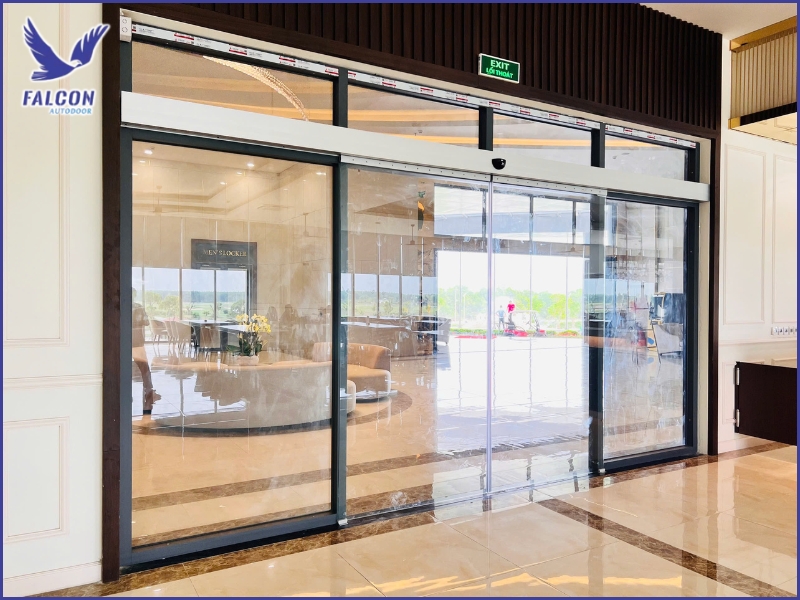The future of automatic doors in green architecture & smart homes
Automatic doors today are not only convenient devices but also play an important role in the development of green architecture and smart homes. With the ability to save energy, enhance safety, and provide flexible connectivity, automatic doors are becoming an essential element in modern living spaces. This article will help you understand their role in sustainable architectural design and intelligent living environments.
1. Automatic doors - Where technology meets modern architecture
In the era of technology and automation, automatic doors have evolved from basic entry support to an integrated design element in contemporary architecture. The combination of engineering, aesthetics, and convenience allows automatic doors to meet functional needs while contributing to a smarter, safer, and environmentally friendly space.
1.1 The development of automatic door technology in recent years
From early motion-sensor door models, automatic door technology has advanced to include voice control, facial recognition, and IoT integration. Many systems now incorporate artificial intelligence (AI) to automatically adjust opening speed and timing based on environmental conditions and foot traffic.
1.2 The role of automatic doors in sustainable architecture
In green building design, automatic doors help optimize natural light, reduce thermal loss, and improve airflow control. Their adaptive opening function reduces the workload on HVAC systems, contributing to energy savings and lowering carbon emissions. As a result, automatic doors are considered one of the key features in eco-friendly, energy-efficient building design.

2. Benefits of automatic doors in green architecture and smart homes
Automatic doors provide convenience while supporting a sustainable, safe, and efficient living environment. When integrated into green architecture and smart home systems, they enhance daily living, optimize energy usage, and improve overall home management.
2.1 Energy saving and environmental balance
Automatic doors operate based on sensors that respond to temperature, lighting, or movement. The door opens only when necessary, helping minimize heat loss and maintain stable indoor temperature, which reduces the load on the air conditioning system and saves energy.
2.2 Enhanced safety and security
When connected to security systems or smart recognition devices, automatic doors can detect unusual movements, lock automatically when required, or send alerts to the homeowner’s phone. This creates an ideal protection solution for residential homes, villas, and modern smart home projects.
2.3 Improved comfort and quality of life
Entry and exit become easier without physical contact or manual effort. For elderly individuals, children, or people with limited mobility, automatic doors provide greater comfort and safety. Additionally, their smooth, modern design enhances the aesthetic appeal of living spaces.

3. Advanced automatic door technologies for green architecture
Technological advancements are making automatic doors smarter, more energy-efficient, and more environmentally friendly. These developments support daily use while contributing to sustainable construction goals.
3.1 Energy-saving sensors and smart adjustments
New-generation automatic doors feature multi-functional sensors capable of accurately detecting movement, light levels, and temperature. The system automatically adjusts opening duration and frequency to minimize energy consumption and equipment wear.
3.2 IoT and AI-Integrated automatic door systems
With IoT technology, users can monitor and control doors via smartphones or smart home management platforms. AI enables the system to learn user routines and automatically adjust operating modes based on schedules and environmental conditions, improving efficiency and convenience.
3.3 Eco-Friendly materials and sustainable design
Modern automatic doors are made from recyclable materials such as recycled aluminum and Low-E insulated glass, helping reduce energy loss and carbon emissions. Minimalist design, high durability, and easy maintenance also support sustainable green building practices.

4. Applications of automatic doors in smart homes and green buildings
Automatic doors are increasingly used in modern residential and commercial spaces due to their intelligent operation and energy efficiency. When integrated with a central control system, they become an essential part of smart living and sustainable architectural planning.
4.1 Application in smart homes
In smart homes, automatic doors can connect with motion sensors, cameras, lighting systems, and HVAC systems










